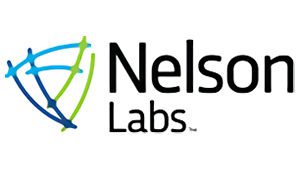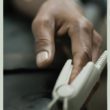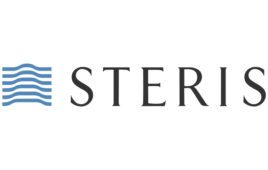Sterile barrier systems are key components in medical device sterilization, so selecting the right barrier is essential.
Jason Pope, Nelson Labs
 Reusable medical devices, prior to use in healthcare facilities, must undergo validation testing to demonstrate the effectiveness of the cleaning instructions and the microbiocidal instructions that will be provided to the healthcare facility. Often, the microbiocidal process that’s validated for a reusable medical device is a set of sterilization instructions. Those instructions tell personnel performing the reprocessing how the device must be processed to correctly sterilize the device. The sterile barrier systems that may be used to contain the device during sterilization and storage after sterilization are an important part of the sterilization instructions. Medical device manufacturers must choose an appropriate sterile barrier system (SBS) for the device prior to sterilization instruction validation testing to ensure that the highest level of patient safety can be built into the reprocessing instructions.
Reusable medical devices, prior to use in healthcare facilities, must undergo validation testing to demonstrate the effectiveness of the cleaning instructions and the microbiocidal instructions that will be provided to the healthcare facility. Often, the microbiocidal process that’s validated for a reusable medical device is a set of sterilization instructions. Those instructions tell personnel performing the reprocessing how the device must be processed to correctly sterilize the device. The sterile barrier systems that may be used to contain the device during sterilization and storage after sterilization are an important part of the sterilization instructions. Medical device manufacturers must choose an appropriate sterile barrier system (SBS) for the device prior to sterilization instruction validation testing to ensure that the highest level of patient safety can be built into the reprocessing instructions.
(Network with Nelson Labs experts at DeviceTalks West, Dec. 11–12 in Orange County, Calif.)
A sterile barrier system must allow for the following activities during reprocessing:
- Achieve the appropriate sterility assurance level (SAL). The SBS chosen to contain the device must allow the sterilant to reach all areas of the device.
- Prevent microbes from reaching the product following sterilization. An SBS must allow for the device to be safely stored by the healthcare facility until the time when it is needed for use on a patient.
- Allow for residual sterilant removal prior to handling. Sterilant residues may be toxic (e.g. residues from ethylene oxide sterilization) or may compromise the barrier properties of the SBS (e.g. the resultant moisture of a steam sterilization process can compromise the SBS if not properly removed).
- Facilitate easy aseptic presentation. An SBS that allows for easy aseptic presentation reduces the possibility of contamination prior to patient contact.
Sterile barrier systems receive 510(k) clearance for specific sterilization parameters, making it important to choose an SBS with clearance for the sterilization set-point required for validating the medical device.
For example, an SBS cleared only for dynamic air removal steam sterilization would be a poor choice for a device to be sterilized in a gravity displacement steam sterilization cycle. Choosing a system that’s cleared for the sterilization cycle appropriate for the medical device takes advantage of the optimal sterilization offered by the barrier manufacturer; that’s because the manufacturer’s choice to include a 510(k)-cleared SBS in the medical device sterilization instructions means the packaging was subject to tests demonstrating the maintenance of sterility following exposure. That testing takes into account any degradation that may result from exposure to the damaging effects of the sterilization process (e.g. the high heat of steam sterilization or potential chemical reactions with a gaseous sterilization process).
When choosing an SBS cleared for the sterilization set-points to be used in the validation of the device instruction for use, we also are ensuring the use of a barrier that will allow for effective residue removal or package drying. Being able to sterilize the device is not enough; to ensure patient safety we must also be able to remove all toxic residues left behind by the sterilant. In the case of steam sterilization, effective drying must be obtained to reduce the possibility of an event occurrence that may compromise sterility.
Finally, when choosing an SBS to contain a medical device during and after sterilization, it’s important to consider the needs of the healthcare facility and personnel who will use the sterile barrier. The medical device manufacturer can validate their sterilization instructions with an SBS that’s easy for healthcare personnel to use, which can improve the aseptic presentation of devices into the sterile field. Additionally, by talking with healthcare facilities and personnel, the medical device manufacturer can determine which barrier systems are cost-effective for the facility to use.
There are many types of SBS, including wraps, pouches, bags and rigid containers, so take the time to find one that’s the best fit for the medical device in question. By looking at these necessities and concerns, the medical device manufacturer, when selecting an SBS to contain the medical device during and after sterilization, can improve the safety to the patient and help contribute to positive healthcare outcomes.
Jason Pope is a certified quality auditor at Nelson Labs (Salt Lake City) and specializes in providing consultations for clients about sterilization of reusable medical devices, endoscopes and pharmaceuticals and general sterilization validation process development. He has over 19 years of experience working in research and development, validation, and routine control of various sterilization processing modalities.





Thank you very much M. Pope for the quality and the relevance of your article. I totally agree with the content of your message.
The choice of the SBS is very important at a early stage of the medical device conception and must be appropriate to transportation too. Manufacturer must provide evidence that all the point you mentionned are in compliance during validation of sterilization instruction. Thanks again for your great article.